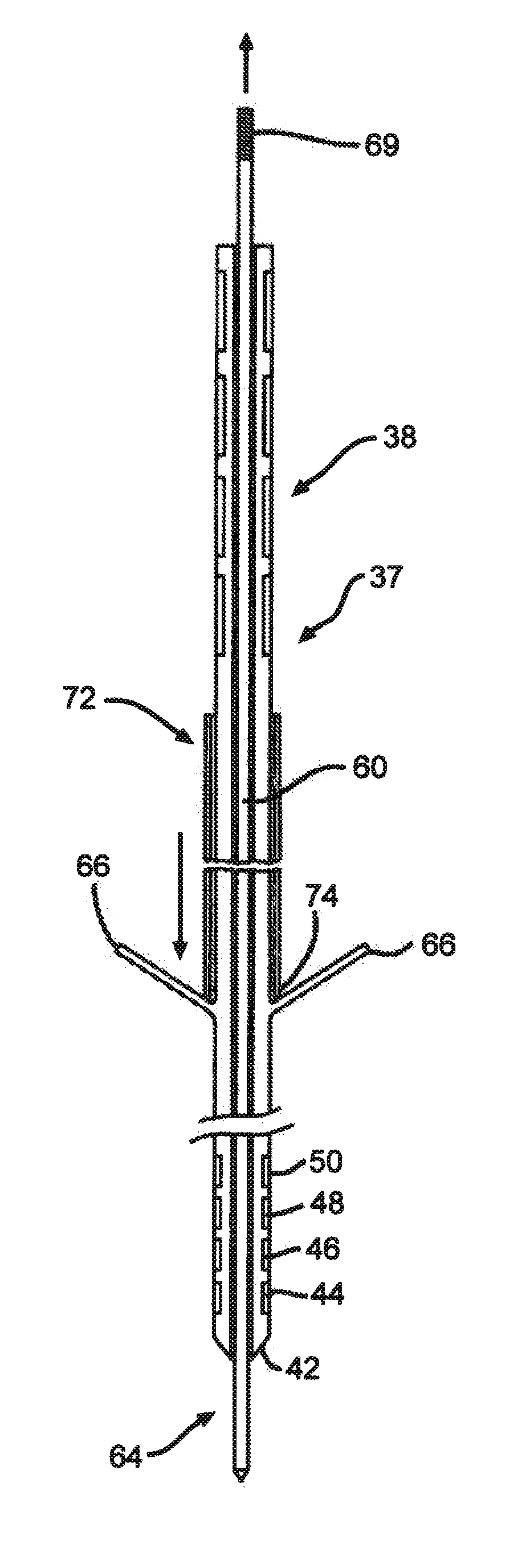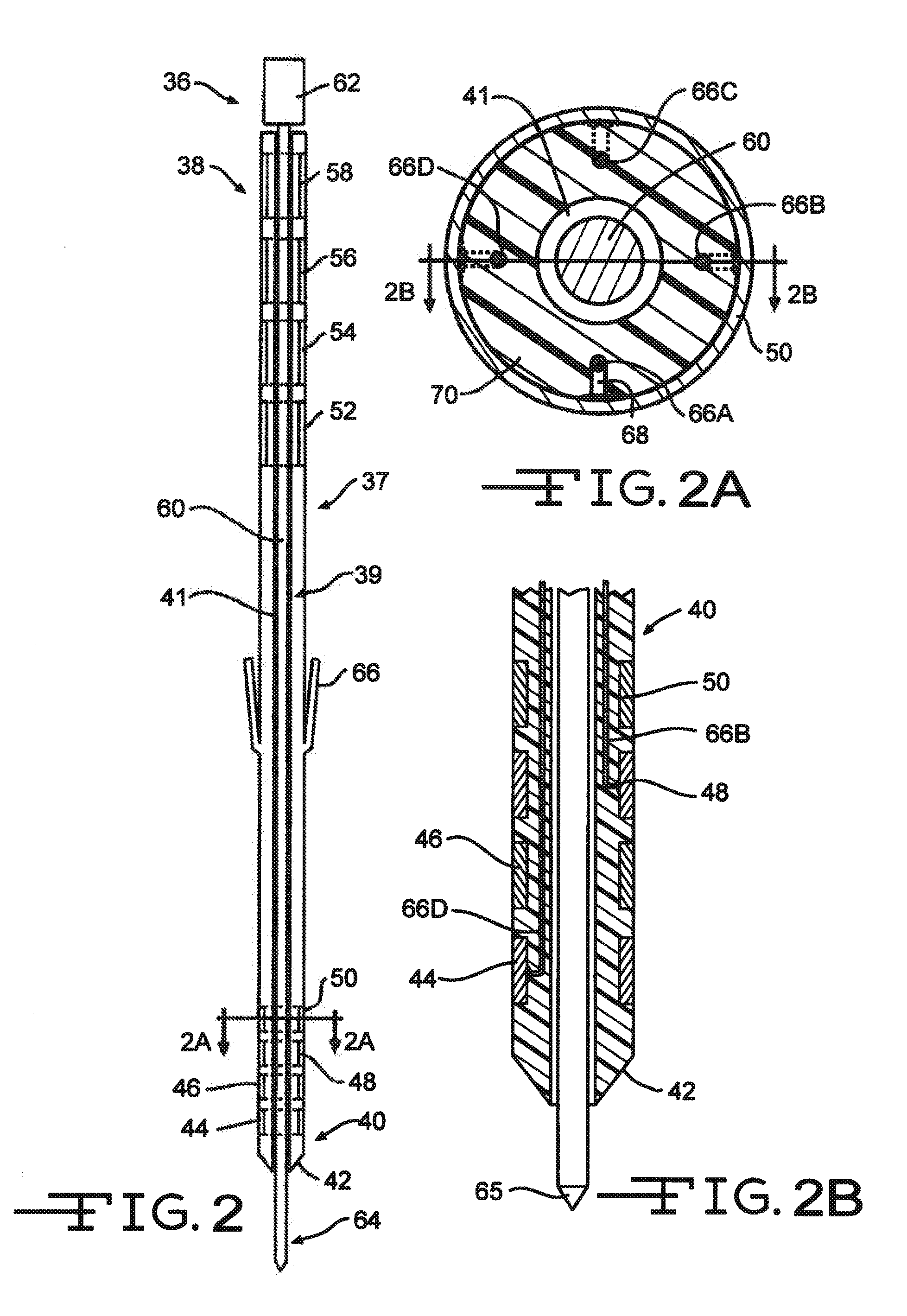Minimally invasive methods for implanting a sacral stimulation lead
a sacral stimulation and minimally invasive technology, applied in the direction of spinal electrodes, internal electrodes, therapy, etc., can solve the problems of compromising urinary tract performance, affecting the function of urinary bladder, and affecting the urinary bladder
- Summary
- Abstract
- Description
- Claims
- Application Information
AI Technical Summary
Benefits of technology
Problems solved by technology
Method used
Image
Examples
Embodiment Construction
[0034]FIG. 1 shows an embodiment of an implanted neurostimulator 26 for stimulating sacral nerves 27 located near the sacrum 28. The sacral nerves are accessible through an entry point, in the skin along an insertion path 33 into a foramen 31 to reach a desired location 35. A neurostimulation system can include a stimulation lead 30, an optional lead extension 32, an implantable neurostimulator 26, a physician programmer (not shown), and a patient programmer (not shown). The stimulation lead 30 has electrical contacts 34 positioned on the distal end to stimulate nerves, and connectors (not shown) on the proximal end to connect to a lead extension or directly to the implantable neurostimulator 26.
[0035]The implantable neurostimulator 26 provides a programmable stimulation signal that is delivered to a desired location to stimulate selected nerves. The implantable neurostimulator 26 is typically implanted in a subcutaneous pocket around the upper buttocks, sometime after the stimulati...
PUM
 Login to View More
Login to View More Abstract
Description
Claims
Application Information
 Login to View More
Login to View More - R&D
- Intellectual Property
- Life Sciences
- Materials
- Tech Scout
- Unparalleled Data Quality
- Higher Quality Content
- 60% Fewer Hallucinations
Browse by: Latest US Patents, China's latest patents, Technical Efficacy Thesaurus, Application Domain, Technology Topic, Popular Technical Reports.
© 2025 PatSnap. All rights reserved.Legal|Privacy policy|Modern Slavery Act Transparency Statement|Sitemap|About US| Contact US: help@patsnap.com



